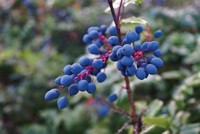Advertisement
Grab your lab coat. Let's get started
Welcome!
Welcome!
Create an account below to get 6 C&EN articles per month, receive newsletters and more - all free.
It seems this is your first time logging in online. Please enter the following information to continue.
As an ACS member you automatically get access to this site. All we need is few more details to create your reading experience.
Not you? Sign in with a different account.
Not you? Sign in with a different account.
ERROR 1
ERROR 1
ERROR 2
ERROR 2
ERROR 2
ERROR 2
ERROR 2
Password and Confirm password must match.
If you have an ACS member number, please enter it here so we can link this account to your membership. (optional)
ERROR 2
ACS values your privacy. By submitting your information, you are gaining access to C&EN and subscribing to our weekly newsletter. We use the information you provide to make your reading experience better, and we will never sell your data to third party members.
Education
Checking Safety of Tattoo Inks, Feel the Burn--of Lip Gloss, Blue Lobsters Exposed
by David J. Hanson
March 28, 2005
| A version of this story appeared in
Volume 83, Issue 13
The popularity of tattoos shows little sign of waning. More and more young people are decorating themselves with brightly colored artwork. However, there are increasing numbers of complaints that tattoos cause adverse reactions in some people, including allergic reactions to inks, a burning sensation during magnetic resonance imaging, and migration of ink to other parts of the body, such as the lungs.
Just what is in that ink being injected into your skin?
This question was asked by a couple of undergraduate students at Northern Arizona University, Flagstaff, who wondered if the inks could be a health risk. They recently presented some of their data on tattoo inks at the ACS national meeting in San Diego.
The students, Haley Finley-Jones and Leslie D. Wagner, working with NAU associate chemistry professor Jani C. Ingram, checked out 17 tattoo inks of various colors from five manufacturers.
It turns out there is a lot of variety in the composition of tattoo inks, even in inks from the same maker and of the same color. Preliminary data found at least 14 metals in the inks, including silver, nickel, and lead. No quantitative measurements were made. Future work will look at organic compounds present in the inks.
Women wishing to have fuller, pouty, "bee-stung" lips have been given a variety of new cosmetics that promise just that. Sometimes called lip plumpers, these lip glosses and lipsticks are promoted as a quick and temporary way to get the same results as expensive collagen or botox injections.
Although some claim to increase lip size slowly, most seem to try to do it by irritating the lips and making them swell. Sold under names like Plump Your Pucker, Super Duper Lips, and Lip Venom, they are a little pricey, from about $12 to $30 per tube.
The active ingredients cover a gamut of flavors. Among them are cinnamon, wintergreen, ginger oils, cayenne pepper, and menthol. Some other lip products, apparently trying for a longer term effect, list more sophisticated-sounding ingredients, like hyaluronic acid, oligopeptides, collagen, and a-hydroxy acids.
The effect on many users, apparently, is pain. A review of some plumpers in the March 16 Washington Post Express newspaper found that most women who tried them just wanted to wipe them off--quickly.
Whether they really give a person fuller lips is another question. Along with the tingling and irritation, women say their lips do feel fuller, but that may be the result of overstimulating all those nerve endings. More objective viewers seem to find little or no enlargement, although lips are more colorful. Ouch!
Ronald L. Christensen, a natural sciences professor at Bowdoin College, Brunswick, Maine, and chemistry professor Harry A. Frank at the University of Connecticut, Storrs, think the color comes from an overabundance of a pigment-protein complex.
Normal lobster color comes from a combination of red and blue pigments that give it that brownish, mottled camouflage hue. The red pigment is astaxanthin, a β-carotene compound also in shrimp. The blue pigment in lobsters is called crustacyanin and is actually an astaxanthin-protein complex. When a lobster produces an abnormal overabundance of this protein, most of the astaxanthin is bound and twisted, resulting in the significant color shift. The result is that the lobster becomes blue.
Of course, if one of these rare and valuable blue crustaceans is cooked, that carotene-protein complex breaks down, releasing the astaxanthin, and the lobster becomes bright red.
This week's column was written by






Join the conversation
Contact the reporter
Submit a Letter to the Editor for publication
Engage with us on Twitter